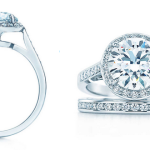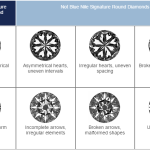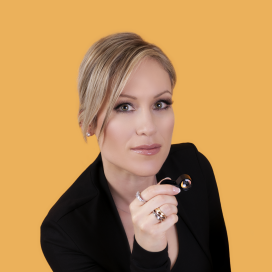Diamonds 102
“Beauty Vs. Rarity: How To Really Buy Diamonds ”
As a diamond consultant I assist both men and women in choosing a diamond or piece of jewelry that fits their specific needs and criteria. For some it’s getting the biggest diamond for their budget with understandable compromises, and for others it’s investing in a rare gem that satisfies the personal pleasure of knowing it’s perfect in everyway. After an initial consultation with a new client however, there is one thing that no one ever wants to compromise on…
In the diamond industry we say, ‘Cut is King’ for a reason, ahem, I mean ‘Cut is Queen!’ A diamond’s cut is the only man-made characteristic that can drastically alter the appearance of a diamond. Nature does her best to bring these beauties to the earth’s surface but they still don’t compare to what humans can do to make them really stand out with their famous sparkle. Cutting requires experience and extreme precision in order to unlock a natural diamond’s inherent beauty. Today’s modern round brilliant hearts and arrows cut diamonds are the pinnacle of technological and mathematical perfection; optimizing a diamond’s light reflection and performance.
When a new client understands that a diamond’s cut equals brilliance, fire, and sparkle, they instantly know they want to invest in the highest cut grade their budget can afford.
What About The Other C’s: Color Vs. Clarity? Aren’t These Important Too?
Color and clarity are both considered ‘rarity’ characteristics and not necessarily ‘beauty’ characteristics.
Colorless or white diamonds are graded on their absence of color. The rarest diamonds are translucent and are also the most expensive. These diamonds are graded as ‘D’ colored diamonds and are 100% pure carbon. However, most natural diamonds do have some trace elements such as nitrogen within their atomic structure. These diamonds appear warmer in color and are less expensive. Taking this a step further, diamonds that are overly saturated with trace elements or have gone through extreme pressure and temperature changes show other colors of the rainbow and are considered ‘fancy’ colored diamonds. Fancy colored diamonds are extremely rare as well and are purchased based on their overall color saturation, hue, and tone with less emphasis on their overall cut.
The clarity of a diamond refers to the particular inclusions found in, or blemishes found on, a diamond. Depending on the location, orientation, and visibility will determine the overall clarity grade. Some inclusions are preferred over others, but in general as long as a diamond is eye-clean (no inclusions or blemishes are visible to the unaided eye from approximately 12” when looking face down into the diamond), a client is satisfied. Clarity does not have an effect on light reflection except in some very rare cases.
So to summarize, a D colored diamond that is graded as Flawless is indeed extremely rare and expensive but not necessarily the most beautiful. If this diamond has a poor cut, it will look dull, dark, and lifeless. Likewise, a VVS1 clarity grade that has a poor cut compared to a SI1 eye-clean diamond that has an ideal cut will also have a very obvious difference in overall light reflection. Therefore, beauty in a diamond can be defined by its ability to reflect light, also known as brilliance, fire, and together, scintillation.
What Exactly Is Brilliance Anyway?
Brilliance in a diamond is a result of two things, 1) light reflected from within the pavilion facets and back up to the observer and 2) light reflected from the surface of the crown facets. Therefore, a diamond cutter needs to analyze the rough diamond material in order to determine the best shape, proportions and polish to maximize a diamond’s light reflection.
It is also important to know that a diamond has a naturally high refractive index of 2.42 and is also the hardest known natural material. These two factors have a direct relationship to a diamonds total luster or surface reflection. In the mineral world, diamonds are known for their ‘adamantine’ luster which is exceptionally bright and reflective. Precision cutting, faceting and polishing brings out this natural adamantine luster that equates to an extraordinary brilliant gemstone. This is essentially what makes a diamond a DIAMOND and no other gemstone can match this unique combination of hardness and polish.
What Is Fire?
In addition to the white light reflection of brilliance, a diamond also disperses light into a spectrum of colors otherwise known as fire or dispersion. Fire in a diamond is a dynamic characteristic and can be seen when moving the diamond under a light source.
Sparkle/Scintillation Of A Diamond
White light brilliance coupled with the dynamic movement of changing colors creates the overall sparkle of a diamond. Sparkle is also called scintillation. The scintillation of a diamond is viewed when the diamond is moving under a light source. Flashes of bright white vs. colors is what gives a diamond beauty.
When Shopping For Diamonds Always Consult With A Professional
Diamonds are beautiful but also expensive. What nature has naturally produced as a byproduct of billions of years of natural processes, we humans have perfected with our knowledge of mathematics and technological precision. Gemological laboratories like GIA or AGS help make sense of basic characteristics such as carat weight, color, clarity and cut but a consumer is best prepared with an educated professional to help guide them in buying a diamond that has been cut for brilliance and not for carat weight. Luckily for you, I’m here to help…
Hey.You Want Ideal Cut Diamonds?
You've got it.
Join ODBA's Diamond Deal Friday and get handpicked diamonds every week from me to you.
No consultation required. Subscribe now!
ODBA Recommends
You May Also Like










